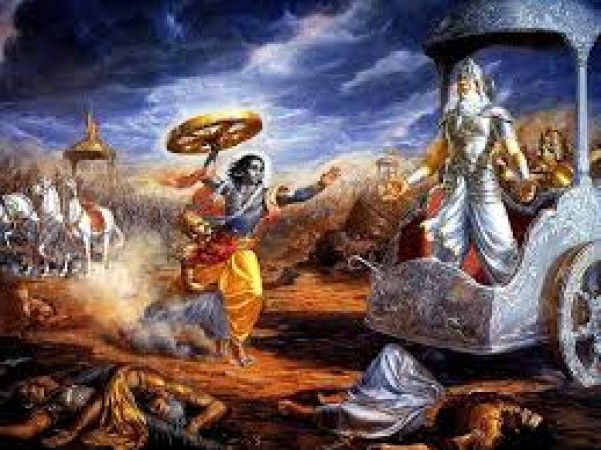
The Mahabharata, one of the most revered and ancient texts in Hindu mythology, is an epic saga that delves into the complexities of human nature, righteousness, and the eternal battle between good and evil. Composed thousands of years ago, this monumental narrative continues to captivate readers and offers profound insights into life, morality, and spiritual teachings. The Mahabharata, an epic of monumental proportions, weaves together an intricate tapestry of human virtues, flaws, and ethical dilemmas. It serves as a timeless source of wisdom, teaching us about the complexities of life, the pursuit of righteousness, and the inner battles we face within ourselves. Through its vibrant characters and profound teachings, the Mahabharata invites readers to contemplate the choices they make, the values they uphold, and the paths they choose to follow. It remains a testament to the eternal struggle between good and evil and continues to inspire and enlighten seekers of truth and spiritual wisdom.
The Mahabharata, meaning "The Great Epic of Bharata," is an epic poem that spans across 18 books or sections known as parvas. It is believed to have been composed by sage Vyasa and narrated by the sage Vaishampayana to King Janamejaya. The epic centers around the conflict between two factions of cousins, the Pandavas and the Kauravas, leading to the great Kurukshetra war. The Mahabharata presents a vast array of multifaceted characters, each embodying different virtues, vices, and shades of human nature. The righteous Pandavas, consisting of Yudhishthira, Bhima, Arjuna, Nakula, and Sahadeva, stand for justice, honor, and dharma (righteousness). The Kauravas, led by the ambitious and ego-driven Duryodhana, represent greed, deceit, and moral corruption. The Mahabharata is not just a tale of heroism and warfare, but also a repository of moral dilemmas and profound life lessons. It explores complex themes such as duty, loyalty, sacrifice, forgiveness, and the consequences of one's actions. The characters face countless ethical dilemmas and internal struggles, forcing readers to contemplate the choices they make in their own lives.
Nestled within the Mahabharata is the Bhagavad Gita, a revered philosophical discourse. Lord Krishna imparts spiritual teachings to Arjuna on the battlefield of Kurukshetra, guiding him through his doubts and dilemmas. The Bhagavad Gita covers various aspects of life, self-realization, and the paths to liberation, making it a profound spiritual text that transcends religious boundaries. Although the Mahabharata is an ancient text, its themes and lessons continue to resonate with people across cultures and generations. The struggle between right and wrong, the complexities of familial relationships, the pursuit of power, and the eternal battle between light and darkness are universal narratives that transcend time and culture. The Mahabharata serves as a mirror that reflects the intricacies and dilemmas of human existence. The influence of the Mahabharata extends far beyond its spiritual and philosophical significance. It has inspired countless adaptations in various art forms, including literature, theater, dance, and visual arts. Its timeless characters, such as Arjuna, Krishna, and Draupadi, have become symbols of virtue, strength, and resilience, leaving an indelible mark on world culture.
also read - Know the top 5 places to visit here, charming Alleppey
The Profound Teachings of Lord Krishna: Insights for Spiritual Growth and Self-Realization